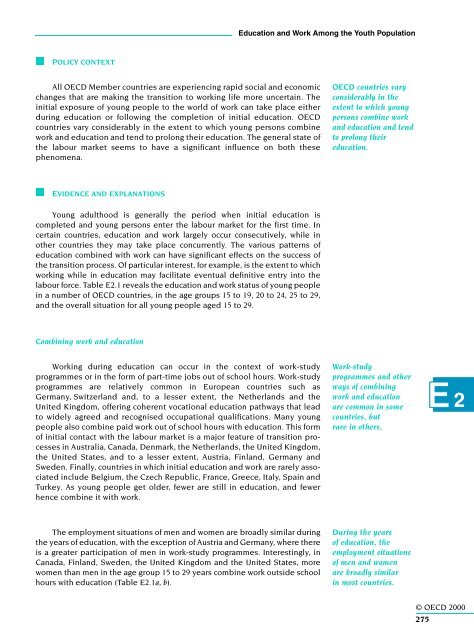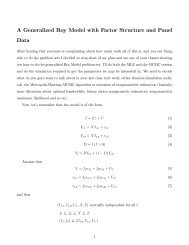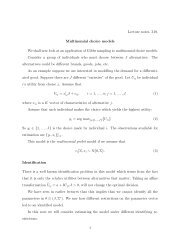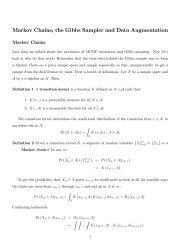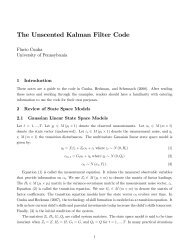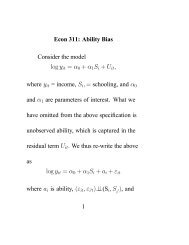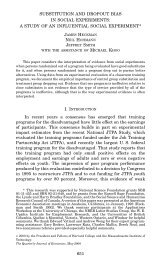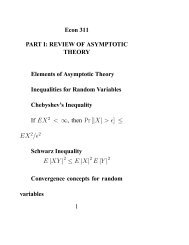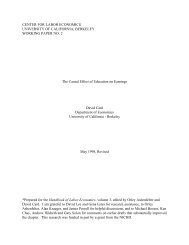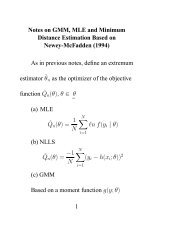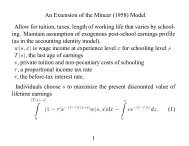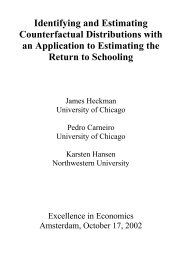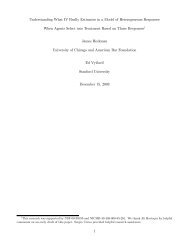OECD (2000)
OECD (2000)
OECD (2000)
Create successful ePaper yourself
Turn your PDF publications into a flip-book with our unique Google optimized e-Paper software.
Education and Work Among the Youth Population<br />
POLICY CONTEXT<br />
All <strong>OECD</strong> Member countries are experiencing rapid social and economic<br />
changes that are making the transition to working life more uncertain. The<br />
initial exposure of young people to the world of work can take place either<br />
during education or following the completion of initial education. <strong>OECD</strong><br />
countries vary considerably in the extent to which young persons combine<br />
work and education and tend to prolong their education. The general state of<br />
the labour market seems to have a significant influence on both these<br />
phenomena.<br />
<strong>OECD</strong> countries vary<br />
considerably in the<br />
extent to which young<br />
persons combine work<br />
and education and tend<br />
to prolong their<br />
education.<br />
EVIDENCE AND EXPLANATIONS<br />
Young adulthood is generally the period when initial education is<br />
completed and young persons enter the labour market for the first time. In<br />
certain countries, education and work largely occur consecutively, while in<br />
other countries they may take place concurrently. The various patterns of<br />
education combined with work can have significant effects on the success of<br />
the transition process. Of particular interest, for example, is the extent to which<br />
working while in education may facilitate eventual definitive entry into the<br />
labour force. Table E2.1 reveals the education and work status of young people<br />
in a number of <strong>OECD</strong> countries, in the age groups 15 to 19, 20 to 24, 25 to 29,<br />
and the overall situation for all young people aged 15 to 29.<br />
Combining work and education<br />
Working during education can occur in the context of work-study<br />
programmes or in the form of part-time jobs out of school hours. Work-study<br />
programmes are relatively common in European countries such as<br />
Germany, Switzerland and, to a lesser extent, the Netherlands and the<br />
United Kingdom, offering coherent vocational education pathways that lead<br />
to widely agreed and recognised occupational qualifications. Many young<br />
people also combine paid work out of school hours with education. This form<br />
of initial contact with the labour market is a major feature of transition processes<br />
in Australia, Canada, Denmark, the Netherlands, the United Kingdom,<br />
the United States, and to a lesser extent, Austria, Finland, Germany and<br />
Sweden. Finally, countries in which initial education and work are rarely associated<br />
include Belgium, the Czech Republic, France, Greece, Italy, Spain and<br />
Turkey. As young people get older, fewer are still in education, and fewer<br />
hence combine it with work.<br />
Work-study<br />
programmes and other<br />
ways of combining<br />
work and education<br />
are common in some<br />
countries, but<br />
rare in others.<br />
E 2<br />
The employment situations of men and women are broadly similar during<br />
the years of education, with the exception of Austria and Germany, where there<br />
is a greater participation of men in work-study programmes. Interestingly, in<br />
Canada, Finland, Sweden, the United Kingdom and the United States, more<br />
women than men in the age group 15 to 29 years combine work outside school<br />
hours with education (Table E2.1a, b).<br />
During the years<br />
of education, the<br />
employment situations<br />
of men and women<br />
are broadly similar<br />
in most countries.<br />
© <strong>OECD</strong> <strong>2000</strong><br />
275


